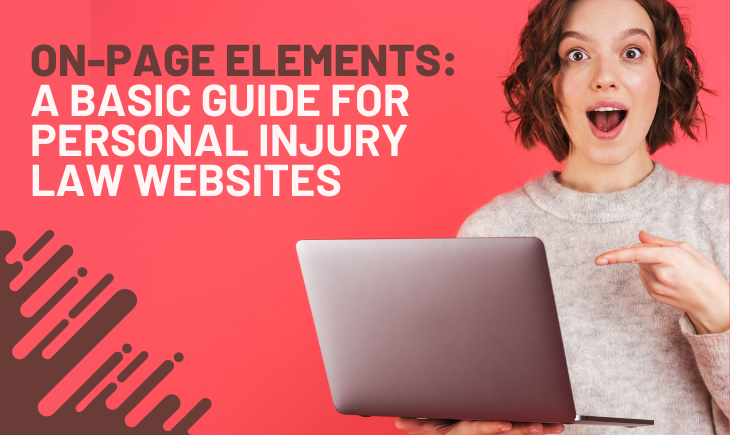On-page elements refer to the various components of a law firm’s web page that can be optimized to improve its visibility and rankings on the search engine results. Regarding law SEO (search engine optimization), optimizing these on-page elements is crucial for attracting relevant organic traffic and potential clients. Here are the critical on-page elements and how to optimize them for personal injury law SEO:
1. Title Tags
Title tags are HTML elements that define the title of a web page. They appear as clickable headlines in search engine results. To optimize title tags for personal injury law SEO, include relevant keywords that describe the page’s content to a tee. Keep them concise, around 50-60 characters, and compelling to attract clicks. For example, “Top Personal Injury Lawyer in [City] | Your Law Firm Name.”
2. Meta Descriptions
Meta descriptions provide a summary of a web page’s content. Although not a direct ranking factor, they influence click-through rates. Optimize meta descriptions by including targeted keywords, compelling messaging, and a clear call to action. Aim for a length of around 150-160 characters to ensure they don’t get truncated in search results.
3. Header Tags
Header tags (H1, H2, H3, etc.) are used to structure the content hierarchy on a web page. The H1 tag represents the main heading, and subsequent tags denote subheadings. Optimize header tags by naturally incorporating relevant keywords and organizing content logically. Use H1 for the main topic and H2-H6 for subtopics to enhance readability and keyword relevance.
4. URL Structure
URL structure plays a role in both user experience and SEO. Optimize URLs by making them concise, descriptive, and keyword-rich. Include relevant keywords that accurately represent the page’s content. For example, use “yourlawfirm.com/practice-area/divorce-lawyer” instead of “yourlawfirm.com/?p=123.”
5. Content Optimization
High-quality and relevant content is crucial for personal injury law SEO. Optimize your content by including targeted keywords naturally throughout the text. Use variations of the keywords to avoid keyword stuffing. Ensure your content is informative, engaging, and well-organized, making it easy for visitors to understand and navigate. Break up content with subheadings, bullet points, and numbered lists for better readability.
6. Internal Linking
Internal linking refers to linking to other relevant pages within your website. It helps search engines like Google comprehend your site structure and establishes relationships between pages. Optimize internal linking for law SEO by incorporating contextual anchor text. For example, if you mention “personal injury cases,” link to a relevant internal page about personal injury law. This helps both search engines and users navigate your website.
7. Image Optimization
Images can enhance your clients’ user experience and make your content more engaging. Optimize images by compressing their file size to improve page load speed. Use accurate, descriptive file names and alt tags for your pictures that include relevant keywords. Alt tags help search engines understand the image content and are also beneficial for visually impaired users who rely on screen readers.
8. Schema Markup
Schema markup is a structured data language that provides additional context to search engines about the content on your web page. It helps search engines comprehend your content better, leading to more informative and visually appealing search results. Implement schema markup for law SEO by including relevant markup, such as “LegalService” or “Review,” to enhance the visibility of your law firm’s information in search results.
Conclusion
By optimizing these on-page elements for personal injury law SEO, you can improve your website’s visibility, increase organic traffic, and attract more potential clients. Remember to focus on providing high-quality content that meets the needs of your target clients while incorporating relevant keywords in a natural and user-friendly manner. Regularly monitor your website’s performance, adjust as needed, and stay updated with the latest SEO best practices.






